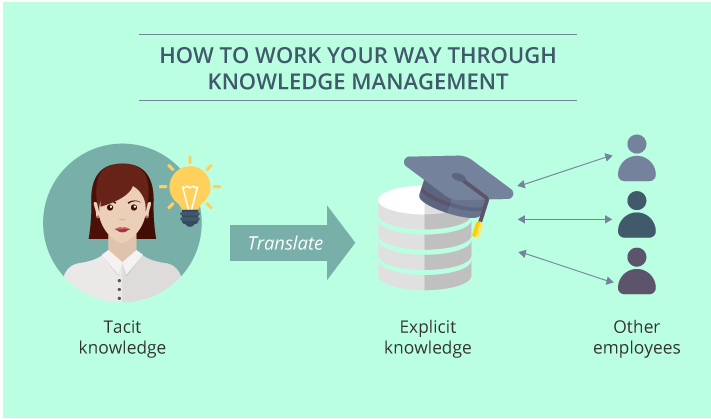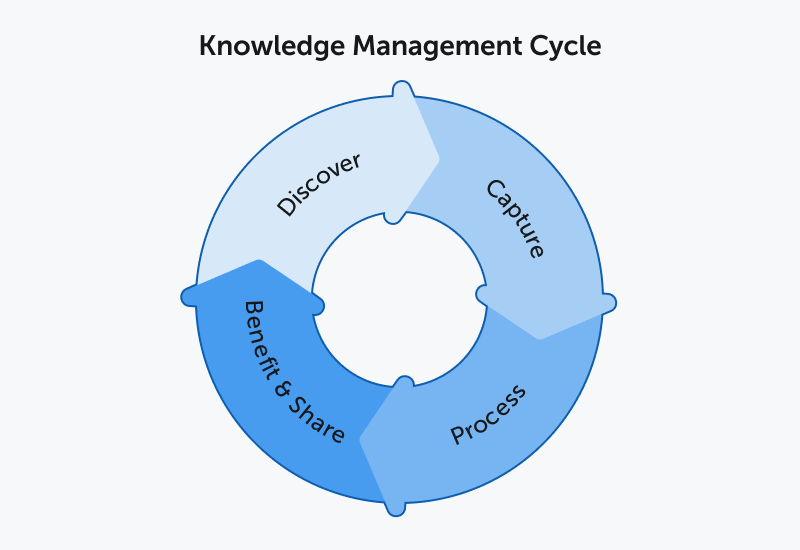Knowledge Management
Knowledge is considered the most important asset that organizations have. The process of discovering, acquiring, organizing and using the organization’s collective know-how is not only a complex one, but also repetitive and ongoing.
Knowledge management can be distilled down to four unique processes, each of them playing a crucial role in an organization’s ability to compete, progress and grow:
- Knowledge discovery
- Knowledge capture
- Knowledge sharing
- Knowledge use

Knowledge management policy
Like knowledge itself, all four processes of knowledge management rely on effective communication. What you do with all your knowledge should be clearly outlined in a company’s policy, a document that communicates a set of guidelines for creating, capturing, sharing and applying your intellectual assets.
A company’s knowledge management policy regulates operations and practices that all employees should comply with on a daily basis. . A well designed document management policy will enable you to create a knowledge map bringing structure to your knowledge management process.

Knowledge discovery and creation
Knowledge discovery includes practices for the discovery of new information, both inside and outside the organization, which, in turn, leads to generating new knowledge. Not only does every employee need to have access to knowledge management tools, but they should also be encouraged and welcome to contribute to the discovery and creation.
Knowledge capture
The difference between tacit and explicit knowledge lies in their practical value. While the former is extremely difficult to communicate, and therefore, capture and apply, the latter is recorded and thus easy to transfer.
The explicit knowledge is everything that resides within your knowledge base, while tacit knowledge is every expertise or skill used by your employees to complete tasks and solve issues. And tacit knowledge needs to be preserved and transferred too.
Knowledge sharing
Once the knowledge is recorded and stored, its transfer becomes faster and easier. From there on, everything relies on managing the knowledge base itself. Though there’s no end to what you can store in there, you must make it clean and keep it tidy to facilitate knowledge sharing.
Knowledge use
To make knowledge even easier to transfer and apply when necessary, make good use of different types of knowledge base resources. Instead of just one template, prepare a number of them for various purposes ‘for creating guidelines, issue and how-to articles, and FAQs.
Pay attention to the structure, as a knowledge base article of any kind should present content in a neatly organized and searchable way. Use a step-by-step structure to break down the problem-solving process, showcase different scenarios and solutions with bullet points, and leverage context-sensitive help to provide additional information, and thus cater to various levels of users’ previous knowledge.
Knowledge use
To make knowledge even easier to transfer and apply when necessary, make good use of different types of knowledge base resources. Instead of just one template, prepare a number of them for various purposes ‘for creating guidelines, issue and how-to articles, and FAQs.
Pay attention to the structure, as a knowledge base article of any kind should present content in a neatly organized and searchable way. Use a step-by-step structure to break down the problem-solving process, showcase different scenarios and solutions with bullet points, and leverage context-sensitive help to provide additional information, and thus cater to various levels of users’ previous knowledge.

